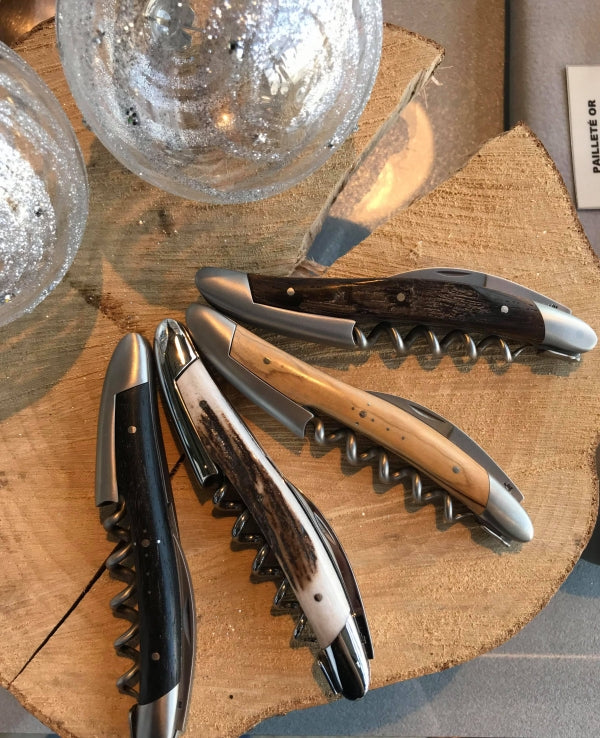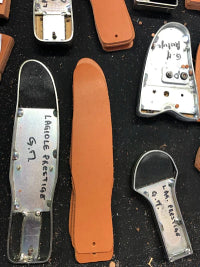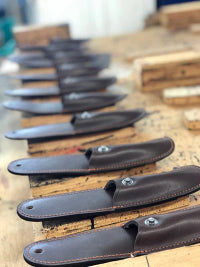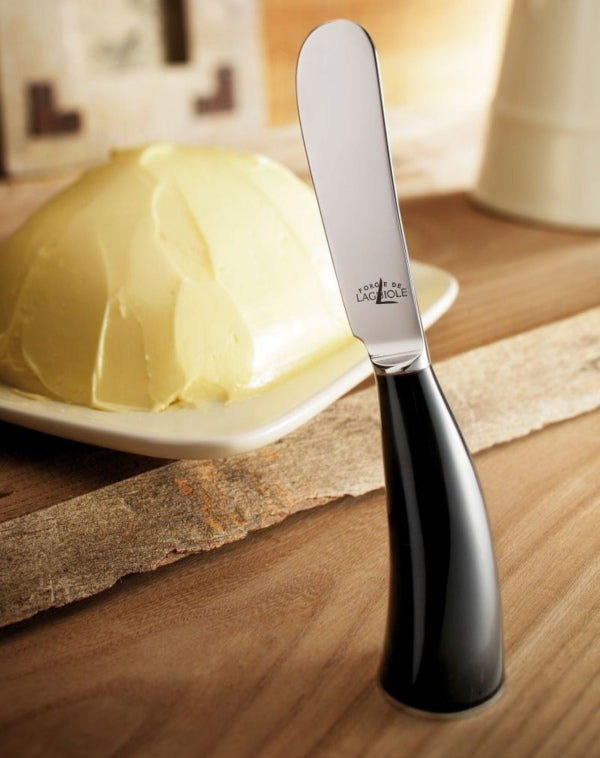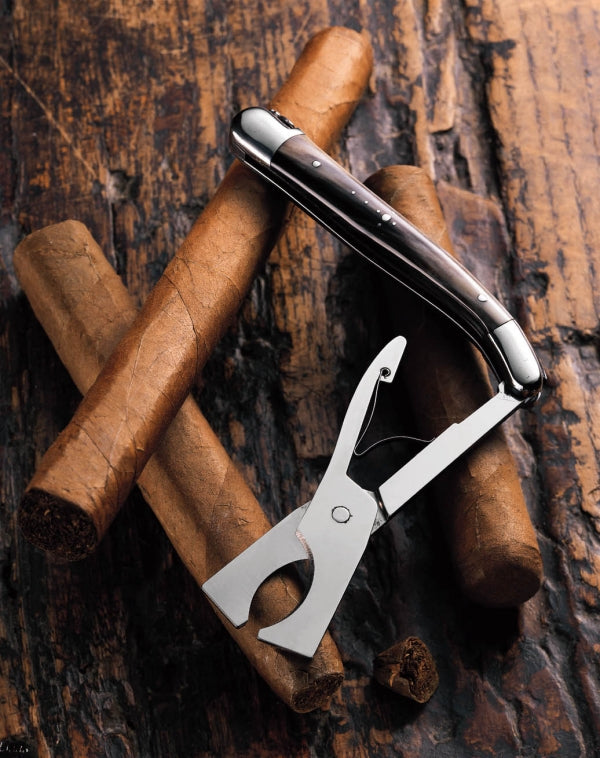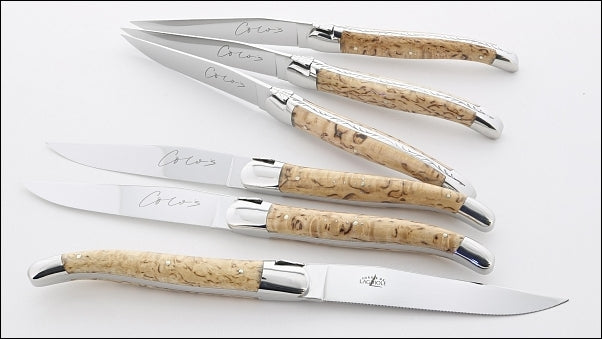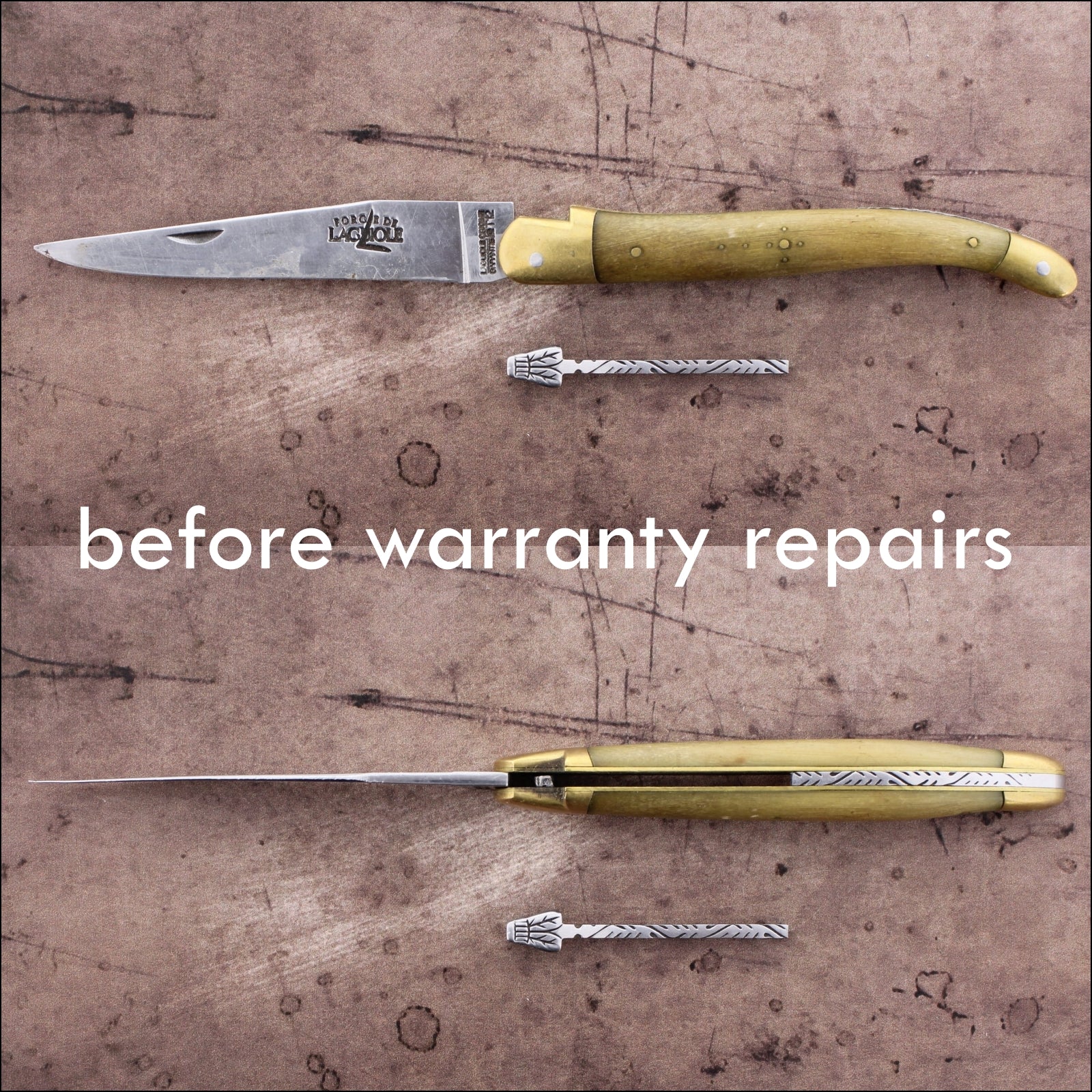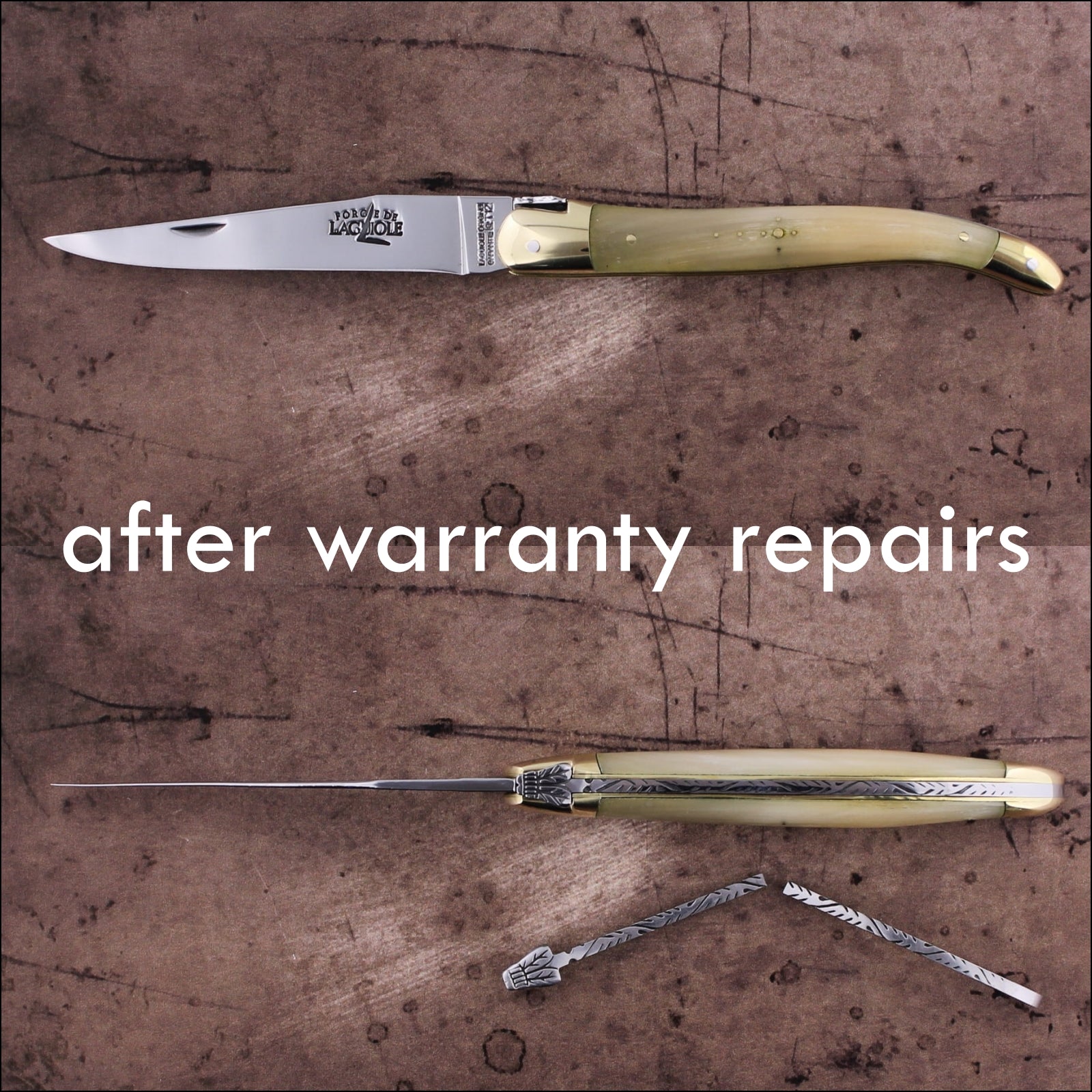One of the hardest Laguiole knives to find are the 3 piece models, the only ones that features a "Trocar" or Awl as most people call it. The 3 piece knife was first introduced in 1880; that is when the corkscrew was added to the handle.
To understand the true purpose of this tool you first need to know that the Laguiole knife was a Cattlemen's tool. As most retailers will make you believe by ignorance or for marketing purpose, the Awl sole purpose is not to punch holes or to take knots out; it is a rudimentary "Trocar".
Most of us who did not spend years in medical school do not know what a Trocar is; it is a surgical instrument that is used to puncture body cavities. Now, you may ask your self why a cattlemen would need such an instrument, here is why: Herds of cattle do not always stay in their assigned fields, although the dogs usually keep them put, they do escape from time to time. The worse fields a cow can escape too are the ones that contain "Luzerne" AKA "Alfalfa"
Luzerne is a legume or a plant that produces nitrogen by means of its root system. This is what contributes to an animal's suffering from "bloat" if they eat too much of it, or eat it at a particular time, i.e., when the grass is damp and young (young grass contains proportionately more of the toxin).
"Bloat" is the technical name for what happens, i.e., the animal "blows up" or "bloats" from the gas produced in its rumen (which is one of the four compartments of its digestive system). If the bloat is not relieved on time the cattlemen will loose his herd as most animals will succumb to internal stomach pressure.
The only way to save the animal was to puncture the stomach to relieve the pressure, so the French shepherds used whatever was at hand, including pieces of barbed wire, nails, or sharp sticks until the Awl was integrated to their knives.
The Awl's shape and size was designed to assure that the cattlemen would not injure the animal by inserting the awl too deep, the tapered triangular angles of the awl are made to create a "clean" whole, not a slash. The notches often found on various models are purely decorative.

